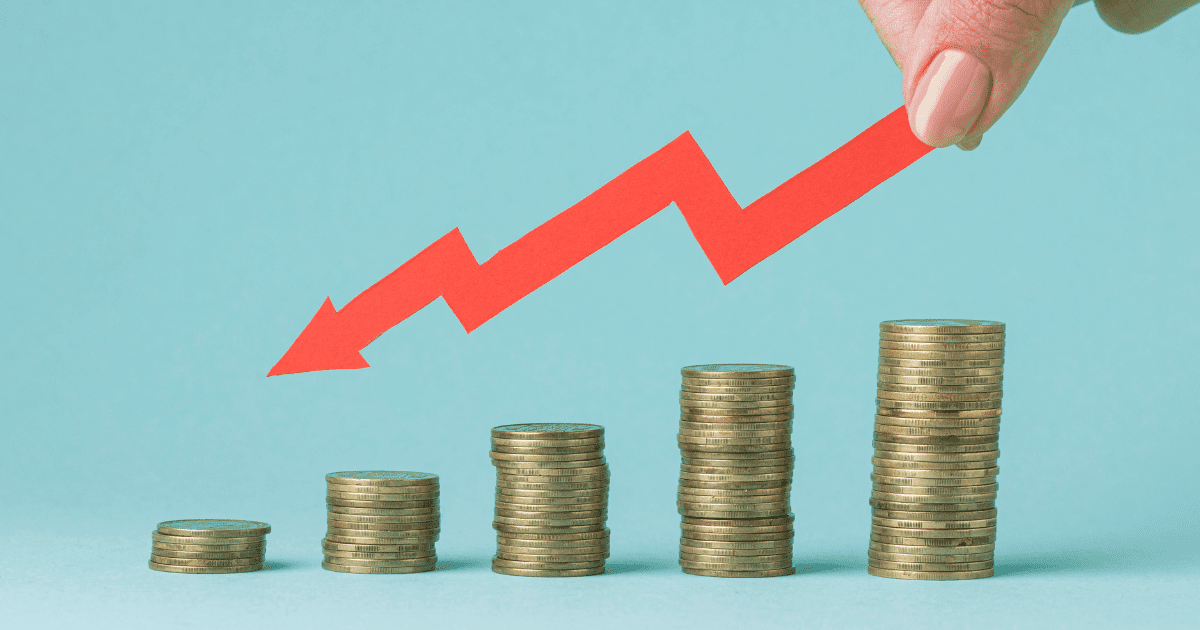
To run a profitable business, you must earn more revenue than you spend—that is the long-term aim, at least. Managing cash flow is important for a business to maintain its financial health. But sometimes, even the most profitable companies can face challenges when their cash outflows exceed inflows.
If you have a plan, negative cash flow is not necessarily detrimental. You want to prevent running out of money, though. You could look at several business funding sources to avoid this scenario or to help improve your company’s cash flow.
Let us understand more about negative cash flow, what happens to the business in this phase, and how to recover.
What is Negative Cash Flow?
Cash flow describes the money coming into and leaving your company over a designated time. Negative cash flow results from more money leaving than entering.
Don’t confuse cash flow with profit. You can make a profit but still run out of cash, or the other way around. Since cash flow only relates to liquid assets, negative cash flow does not always indicate a loss.
However, you must have enough cash because you cannot pay your personnel, suppliers, and energy bills with tied-off assets.
What Happens if Your Company Has Negative Cash Flow?
Negative cash flow occurs when a company’s expenditures outweigh its earnings. Otherwise, inflow does not match expenses; hence, the company spends more money than it generates.
Depending on your business’s operations, you could have bad cash flow at several points. For example, you might temporarily overspend your income if you buy more equipment for a growing company. Negative cash flow does not automatically translate into losses; businesses can make a net profit yet still have more expenses than income.
Is Negative Cash Flow Bad for Your Business?
This is the one situation when negative does not always equate to bad.
Negative cash flow events are natural and unavoidable one-off occurrences in business. Still, you should be concerned if negative cash flow lasts for months. If your expenses always exceed income, meeting running costs, breaking even, and being profitable will be challenging.
More precisely, you need not be on the edge about negative cash flow if:
- As a new company, you invest resources to become well-known in your market.
- Your offerings are expanding into different markets for growth purposes.
- Demand for your goods is seasonal; for instance, a Christmas present shop or a summer wardrobe line.
What Causes Negative Cash Flow?
Negative cash flow first indicates that you are spending more than your company generates. Furthermore, you may find that you have;
1. Higher or Unexpected Costs
Unplanned expenses can arise even with a financial strategy for a given period. Hence, you may find yourself spending more than your cash flow allows. For instance, you must pay for repairs if your equipment suddenly breaks. Rising raw material prices also affect your income-cash flow balance and raise overhead expenses.
2. Outstanding Client Payments
Although giving consumers credit is a great idea, it could negatively affect cash flow over time, both in the medium and long term. When most consumers fail to pay their bills on time, it could significantly impact your company’s income. As a business owner, a large number of outstanding bills make it difficult to meet your financial commitments.
3. Insufficient Pricing
Establishing a perfect pricing strategy for your company is not based on instinct. If you do this, you risk overpricing or underpricing your offering.
Pricing your goods above the market could reduce demand. At the same time, your company may not be profitable if you charge too little. Therefore, it is advisable to start with a feasibility study using market research and apply this data to determine optimal prices.
4. No Practical Financial Strategy
A company cannot satisfy its financial commitments without a well-organized budget. The business will face many unanticipated expenses much above its income. Projecting running expenses becomes challenging if your cash flow projection deviates greatly.
How Does Negative Cash Flow Impact Businesses?
Companies will struggle to survive in cases of continuous poor cash flow management. Before deciding, private investors review your cash flow statement. Since you cannot guarantee ROI, investors may start to doubt your company’s financial situation if your financial statement shows inconsistent positive cash flow.
Apart from that, a business can have the following impacts from negative cash flow:
- Destroyed business development
- Not able to cover basic business expenses
- Random budget cuts
- Loss in businesses
- Bad or ineffective processes
4 Strategies to Overcome Negative Cash Flow
There is no one-size-fits-all approach to recovering from negative cash flow. You should closely review your cash flow statements and balance sheet, then create a special recovery strategy to achieve good cash flow.
You can follow the below tips to recover from negative cash flow:
1. Lower Your Spending
Examine your operating expenses and overhead charges closely; is there anything you should not be paying for? For instance, consider outsourcing particular tasks rather than hiring an internal employee.
You should make some tough business decisions here. Consider slowing your investing activity, combining employment positions, or using more reasonably priced suppliers and vendors.
2. Simplify Your Payment Schedule
If bad or long-term debt burdens your company, restructure your payment terms and conditions. Reducing credit will help you achieve good cash flow by motivating clients to pay on time.
3. Create an Emergency Stash
Make an emergency reserve for your company to assist you in handling unexpected financial responsibilities. This cash will cover unexpected costs, including credit card debt, equipment repairs, and hefty taxes. Cutting cash outflow and redirecting these dollars into your stash will help you quickly build up your emergency fund without raising your cash inflow.
4. Eliminate Low-selling or Unprofitable Products
Look over your sales statistics and see which products don’t generate much revenue for your business. Prioritize profitability while keeping aesthetics in mind. An example would be a product with a healthy profit margin but low sales volume. Because of this, it is difficult to manage inventory levels, and your cash flow is affected.
Closing Thoughts
If you experience negative cash flow, obtain a business loan to cover temporary costs. Then, create a solid plan to improve your finances and strengthen your company.








